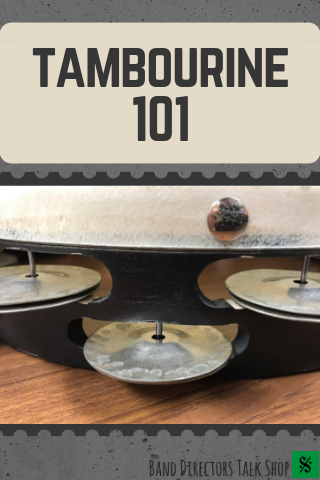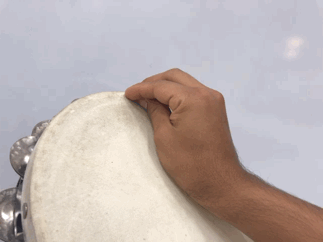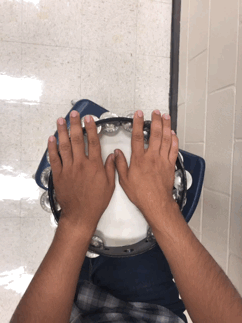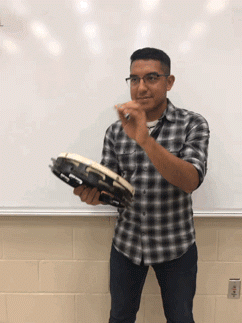CLARINET ARTICULATION: GETTING IT RIGHT FROM THE BEGINNING
by Dr. Julianne Kirk-Doyle
Before addressing articulation, we as teachers must be certain students have solid fundamentals of embouchure, air support and tongue position. It is important to understand how the reed works and why it is important use the tongue to articulate.
One of many problems encountered with young students is "huffing" which is not using the tongue to create the separation. This is diagnosed if you see neck, cheek or throat puffing on every articulation. The player is stopping the air to create the separation rather than interrupting the air with the tongue. Remember: Air is always constant.
If a student has jaw or lip motion on every articulation, they are most likely anchor tonguing. Anchor tonguing occurs when the tip of the tongue is anchored behind the lower teeth and the articulation is created with the middle of the tongue touching the reed. Ideally, the tip of the tongue touches just below the tip of the reed to interrupt the vibrations of the reed.
The reed vibrates in a “diving board” motion against the tip of the mouthpiece. Insert a business card between the mouthpiece and reed to see how far down the reed the “diving board” goes. This shows students how much mouthpiece should be in their mouth when playing.
Embouchure stability is the most crucial element for achieving successful articulation. To set the embouchure, have students pronounce “Ewe” as if they sucked on a lemon! Do the same exercise again while looking into a mirror. (Using a mirror is incredibly helpful) Next have the student feel this sensation by using only the barrel, mouthpiece and reed. Close the end of the barrel with the hand, form the “ewe” embouchure, and suck the air out of the mouthpiece as if they were drinking a milkshake. This helps them see and feel the lips seal around the mouthpiece and creates a flat chin – essential elements of a good embouchure. Have them observe this in the mirror, then remove the hand and blow (creating an F# pitch) while maintaining the shape of the embouchure.D
Using the Tongue to Articulate
The clarinet is played with a high tongue position. The tongue should be parallel to the roof of the mouth, arched and high. Use the syllable “Shhhh" to get the tongue in the right place. A great illustration is that of a garden hose. If you have a plant at the end of your driveway and your garden hose will not reach it, how do you get the water to the plant? If you put your thumb over the end of the hose, only a few drops might reach the plant. But, if you angle the garden hose up the allowing the water to arc up and over into the plant, it gets watered. The position of the tongue for clarinet articulation is very similar. The tongue is high inside the mouth, the air comes up and over the tongue and down into the mouthpiece. Only a small amount of tongue motion at the very tip of the tongue is required rather than the entire tongue moving. This allows a quicker and more effortless articulation speed.
Air is another essential fundamental for good articulation. The tongue interrupts the flow of air, but the air never stops to create separation. Have students put their hand on their lower abdomen and breathe in through their belly. As they exhale, have them hiss "Tsssssss" and note that when expelling the air with this syllable, they will keep the belly extended rather than let it collapse in. This is how their abdomen should remain while playing whether they are sustaining or articulating.
Syllables should be used to create the desired quality of separation. Syllables such as “toh” while ideal for a brass player, are not desirable for clarinet. Any syllable that lowers the tongue position will cause embouchure movement and create unfocused tone quality and unclear articulation. Syllables such as “tee” or “dee” will keep the tongue high in the mouth and maintain the embouchure shape. Have students practice the breathing exercise (mentioned above) while speaking different rhythms on “tee” or “dee.” Use a mirror for reinforcement of the “Milkshake face” embouchure with no excessive neck or jaw movement.
These syllables should be practiced on just the mouthpiece and barrel assembly. Barrel and mouthpiece practice will allow the student not to worry about the resistance of the entire instrument. When the student can comfortably articulate with a constant air stream and efficient embouchure without jaw or huffing motion, add the upper joint, then the lower joint, and finally the bell, to build the air column.
For more advanced students who want to create a “secco” or stopped staccato, add a “t” to the end of the syllables creating “deet” or “teet.” Envision a glass bottle filled with soda. If you shake the bottle, what happens to the soda? It fizzes! The soda is pressurized so that if you open the soda after being shaken, the fizz would explode everywhere. Imagine poking a hole in the top of the bottle cap with a needle, then there would be a thin stream of “fizz” coming out the bottle cap. If the hole is then covered, the fizz would continue to pressurize, but would stop temporarily until the finger is released. For stopped staccato the fizz is the air and the finger is the tongue. Our air should pressurize behind the tongue so that the articulation is a “release” rather than an “attack.” This will minimize tongue pressure on the reed and allow for a much cleaner and crisper form of articulation. Try this with the breathing exercise discussed earlier. Use the tip of the tongue to stop the air first, and then release the tongue, allowing the air to flow out immediately however the air never truly stops.
A simple approach to this is to have the student do the following:
- Stick out their tongue
- Release, tongue back on reed, etc.
- Place the tip of the tongue just below the tip of the reed
- Put the mouthpiece in the mouth without taking the tongue off,
- Form the embouchure, inhale through the corners, blow (no sound)
- Release the tongue.
- Put the tongue back on the reed (keep the air moving)
Always listen to the quality of sound when articulating. If the sound seems flabby or spread, the tongue placement or air support are lacking. The student could also be using too much tongue surface or pressure on the reed. Equipment should also be evaluated as to proper reed strength. A reed that is too soft will not lend a desirable quality of articulation. and a reed that is too hard will sound stuffy. For successful articulation, be sure the embouchure is stable, the air column is constant, the sound is supported and the tongue position is high.











